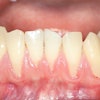
The ADA studies on the economic viability of alternative dental providers released this week have more holes in them than a slice of Swiss cheese.
The studies actually documented the financial feasibility of a dental therapist "within a larger dental practice." Yet, the overall summary conclusion is that "the introduction of additional providers does nothing to address this issue [of providing care to underserved populations]."
If dental therapists can't address this issue, applying the same criteria to dentists logically leads to the same conclusion. Dentists earn three or four times as much -- or more -- than dental therapists, and therefore do not represent an economically viable model to address the issue. If dentists were included in the study as one of the alternative providers -- which they actually are -- the study would have concluded that dentists are least able to provide care for the underserved. But this is so well-known, it hardly warrants annotation.
Apart from not including dentists as alternative providers, the studies have a number of structural flaws. For example, they distinguish between DHATs (dental health aide therapists in Alaska) and DTs (dental therapists), asserting that the preventive and restorative functions of DHATs are limited or less extensive than for DTs, when they are in fact the same.
In addition, the studies list the DT length of training as four years in a university, compared with two years for a DHAT, even though the traditional training of DTs is two years, not four. And the estimated costs of training a DHAT/DT is twice what it would cost to train one in a community college that has an established dental hygiene program, which could easily be expanded to train dental therapists.
The economic analysis is also set up to ensure a negative outcome. "Economic viability is determined by modeling expected revenues and expenses in the simplest practice model -- one chair and a dental assistant," the study authors wrote. As the famous tennis star John McEnroe would likely exclaim, "You can't be serious." No one in their right mind would suggest a dental therapist establish a private, one-chair office. The negative loss (gross income minus cost of operation) ascribed to dental therapists in this report is miniscule compared with the negative loss of a dentist practicing in a one-chair office limited to fillings and simple extractions at Medicaid fees.
In addition, the study erroneously factors in the cost of operation as being equal at all times. A multichair office seldom has every chair-hour filled with a patient. Low-capitation dental insurance plans are sold on the basis that filling those empty chair-hours provides additional income to dentists, even though the net earnings might be less for the capitated patients. Applying this concept to the addition of a dental therapist in a private practice would totally alter the economic analysis of the ADA study in favor of the viability of the dental therapist, just as it has for dental hygienists.
Private practices and community health centers are not the only locales to consider. School-based dental programs staffed by salaried dental therapists provide access to care for all children with utilization rates exceeding 90% and at documented lower cost for equivalent services provided by dentists. Considering cost alone obscures the profession's obligation to prevent and treat disease, that cannot be prevented. Should not priority be given to those who are least able to help themselves, to the children of underserved populations who lack the wherewithal to access care by themselves?
A multitude of indirect benefits that have economic value have been ignored in this study. Dental therapists providing accessible, affordable, and timely dental care would reduce hospital emergency room costs for essentially inadequate care. Fewer children would miss school, and fewer adults would miss work because of toothaches and consequent infections. Continuation of the present system of neglect for the underserved population will not reduce the pain, infection, and the occasional death from dental disease, but that is the system that this ADA study promotes.
The alternative proposed by the ADA to address the dental neglect of underserved populations is to raise Medicaid fees. One wonders how many dentists would favor increasing sales taxes, taxes on their services, and a higher personal income tax to pay for the increase in Medicaid fees.
Frankly, if I were a dues-paying member of the ADA, I would demand my money back for sponsoring a study that is so transparently an effort to disparage dental therapists without offering a reasonable alternative to providing dental care for our neglected populations.
And finally, why did it take the ADA so long to release these reports, which are dated April 2012?
Jay Friedman, DDS, MPH, has published more than 60 papers in professional journals and is author of An Intelligent Consumer's Complete Guide to Dental Health. He has more than 60 years of experience as a clinician, university researcher, consultant, dental insurance administrator, and director of large group dental practices.
The comments and observations expressed herein do not necessarily reflect the opinions of DrBicuspid.com, nor should they be construed as an endorsement or admonishment of any particular idea, vendor, or organization.



















